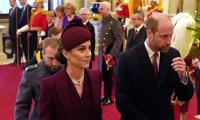If someone in Karachi suddenly loses power on one side of their body, has difficulty speaking, or experiences facial numbness, especially in the middle of the night, it’s crucial to act quickly.
These are signs of a stroke, and experts advise rushing the patient immediately to the National Institute of Cardiovascular Diseases (NICVD) in Karachi, where lifesaving treatment called mechanical thrombectomy is available. This procedure can prevent permanent disability if performed within four to six hours of the stroke.
“Stroke either kills or leaves a person permanently disabled. But if a stroke patient reaches us at NICVD within 4-6 hours, we can perform mechanical thrombectomy, which saves lives and prevents disability,” said Prof Irfan Lutfi, director of Interventional Stroke Services at the NICVD Karachi.
Mechanical thrombectomy is a procedure where interventional cardiologists or radiologists remove blood clots from the brain in case of acute ischemic stroke. According to Prof Lutfi, the treatment is highly effective in preventing lifelong disability, provided it is done in time.
“The NICVD is the only centre in Karachi offering this treatment free of charge, round the clock. No other public or private health facility provides this service 24/7 without asking for any payment,” he explained. In contrast, the cost of stroke intervention at other health facilities in Pakistan ranges from 1 million to 1.5 million rupees per procedure, he added. So far, the NICVD has successfully performed 350 mechanical thrombectomies, with a success rate of 60 per cent. “The key factor in determining the success of the procedure is time. If the patient reaches us within the four-to-six-hour window, and the stroke is caused by a blood clot, we can remove it and save the patient from lifelong disability,” the expert said. Prof Lutfi emphasised that stroke symptoms included sudden weakness on one side of the body, slurred speech, confusion and facial drooping. “Anyone exhibiting these signs should be brought to the NICVD immediately. Do not waste time,” he warned.
In addition to Karachi, the NICVD centres in Tando Muhammad Khan and Sukkur also offer mechanical thrombectomy, ensuring that stroke patients across lower and upper Sindh could receive timely care.
According to Prof Lutfi, around 25 stroke patients were brought to the NICVD Karachi every day, but not all were eligible for mechanical thrombectomy. “Patients with small vessel strokes or those arriving late, after eight hours, could not undergo the procedure,” he said.
Stroke is a significant health crisis in Pakistan and is the number one cause of disability and the second leading cause of mortality according to the World Health Organisation (WHO). Unofficial data suggests that 1,000 people suffer strokes daily, with around 60 per cent of them dying from the condition. Many of the survivors are left with permanent disabilities.
Prof Lutfi underscored the importance of stroke prevention, which could be achieved through lifestyle changes. “We need to adopt healthier habits—eat less and eat healthily, exercise for at least 40 minutes a day, avoid smoking and alcohol, and control blood pressure,” he advised. High blood pressure is one of the leading risk factors for both stroke and heart attack.
“The NICVD in Karachi is a lifeline for stroke patients, offering cutting-edge treatment that can prevent permanent disability. However, the key to saving lives is recognizing the symptoms and getting the patient to the hospital within the crucial 4-6 hour window. Prevention, awareness, and quick action are critical to combating Pakistan’s stroke crisis,” Dr Lutfi concluded.
The incidence of stroke in Pakistan has been rising, fuelled by hypertension, diabetes and unhealthy lifestyles. In Karachi, the NICVD remains the key institution for treating stroke patients. However, for those living far from the city, reaching the hospital within the critical time frame could be challenging.
“We need more stroke centres across Pakistan to ensure timely care,” said Dr Abdul Bari Khan, CEO of the Indus Hospital and Health Network.
He also expressed the hope that one day, all medical devices used in stroke treatment would be produced locally in Pakistan. “We have the talent and resources. What’s needed is dedication, knowledge, and hard work.”
An aerial view of Karachi city. — AFP/FileCultural BlossomsThe ArtCiti gallery is hosting an art exhibition...
Karachi Mayor Barrister Murtaza Wahab exchanges views with the Ambassador of the Czech Republic, Ladislav Stienhubel,...
A postman is collecting letters from a post box at GPO Cantt on October 8, 2024. — APPA consumer court has ordered...
View of the KE headquarters in Karachi. — Facebook@K-Electric/FileK-Electric has announced the launch of 4th...
Karachi Metropolitan Corporation building. — X@emnpk/FileSindh Chief Secretary Syed Asif Hyder Shah has taken...
Students during an exam in this undated image. — PPI/FileIBA Sukkur Vice Chancellor Dr. Asif Sheikh has sought help...







